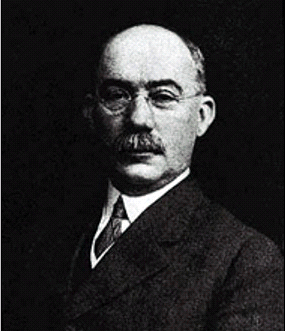The McKinsey matrix is a strategic unit of analysis designed by the eponymous strategic consulting firm, which was devised in the early 1990s. 70's.
In this article you will find:
Source
Another name that is often given to this strategic unit of analysis is the “Business screen General Electric”, Since the main idea of this was to evaluate the products and services offered by this company, which originated in the United States. This company owned at that time more or less 150 strategic units of analysis. Because General Electric I needed a adequate and regulated strategic approach for every product it offered, and that's when they requested assistance from McKinsey to help them organize and configure their business portfolio. This strategic unit of analysis would help
Advertisements
Although this strategy was established over 40 years ago, it is used yet.
About McKinsey & Company, Inc.
Notably McKinsey & Company Inc., is known to be the consultant more internationally famous and prestigious. It's a company global which is responsible for solve problems Due to the strategic mismanagement. It is the top employer of graduates of the best business universities worldwide, such as the Harvard Business School. It is the company where it is more complicated get a job offer, due to their high level, and it is the job offer that most young university students would like. But it is not so easy to be part of the employees of McKinseybecause it only hires the world's smartest people on this topic.
Advertisements
How the McKinsey Matrix Works simplified
Although the matrix of McKinseysimplified has many variants, it will always be made up of 9 cells, with a vertical or horizontal column that represents the market attractiveness level (divided in low, medium and high), and a perpendicular column that represents competitive strength of the business unit (also classified in low, medium and high). The goal of this matrix, as we already said, is position each unit of the business portfolio (or UEN), after having determined the size and market share.
At the same time, in the version simplified of this matrix three areas of 3 different colors are captured, which cover 3 cells each (resulting in 3 areas of equal size): the area called "harvest / divest", Another call"selectivity / earnings", And one last call"invest grow", Which is in the upper corner of the matrix diagonal to the area of"harvest / divest”. The business area that remains in the area "invest / grow”, Means that must be invested on it, as this will do grow up in the market to this company (see market development strategies). Those that remain in the section “selectivity / earnings”, They should receive a selective investment. And for those who remain in the section "harvest / divest”, It is recommended to sell, or simply to divest progressively (see divestment and liquidation strategy). Anyway, we will explain this further later.
Advertisements
How to identify the competitive level of the market
To identify the market competitive level, several factors are taken into account, such as: technology, productivity, the structure of the price, product quality, product image, and relative market share, among others more.
How to identify the attractiveness of the market
Just as there are factors that are taken into account to determine the market competitive levelThere are also other factors that determine the strength of the attractiveness of the business unit. For example: international competition, globalization of the unit, degree of risk, growth perspective, capacity to extend competition, among others.
Advertisements
After this is that determines the competitive level of the market and its attractiveness, through the variables mentioned above (and others).
Tools such as SWOT analysis Y Porter's Five Forces Analysis.
Advertisements
What do you do with these results?
Then, it is analyzed the impact these variables have both in the attractiveness and in the competitiveness of the market. To cite an example, to explain the above: suppose that a company has higher potential growth, more globalization, with greater capacity for innovation, better technology, better productivity and greater availability of products (resulting in more areas of deal in the "invest / grow" section of the womb). Clearly this company needs a higher investment than what a company with less potential growth, less productivity, less globalization, less capacity for innovation, less technology and less product availability would need (everything opposite to the previous company; as a result this company would have more business areas in the "harvest / divest" section). And along with more investment (well thought out), there are more returns in the future.
Sure, it may be that the company lose income for making an investment that does not result of any benefit, but that is precisely what the matrix of McKinsey, to help a company decide if it should invest more in a product, or leave it at that, or liquidate it, based on the ability to project the attractiveness and competitiveness of the business. Everything is in analyzing the potential of a company based on a set of variables.
You might think that this strategic unit of analysis is aimed only for large companies with high potential, but it is not, since this matrix can help a company with less potential to determinate what factors should improve if you want to achieve one large projection in the market. Of course, it will not be an easy task, since they would practically have to reinvent the business, but all this would entail future benefits. And for companies with a medium potential (which would end up with more business areas in the section “selectivity / earnings”Of the matrix), this analysis offers them assistance to know in what aspects and how much should they invest, resulting in a investment selective.
The original matrix
The matrixfromMcKinsey original is a bit more complex, differing in some respects from the simplified matrix, which is what we have explained throughout this article. like the simplified matrixTaking into account the cell where the strategic unit is located, different recommendations are given: from leaving the business unit to maximizing it.
In the original matrix you can see circles, resembling fractions in elementary math (in the form of pieces of cake), which represent different strategic units. These circles have different sizes, thus representing the market size of that unit, and the pieces of cake that they own represent the participation of said unit in their respective scope of the market. The arrows represent the expected progress of these units.


